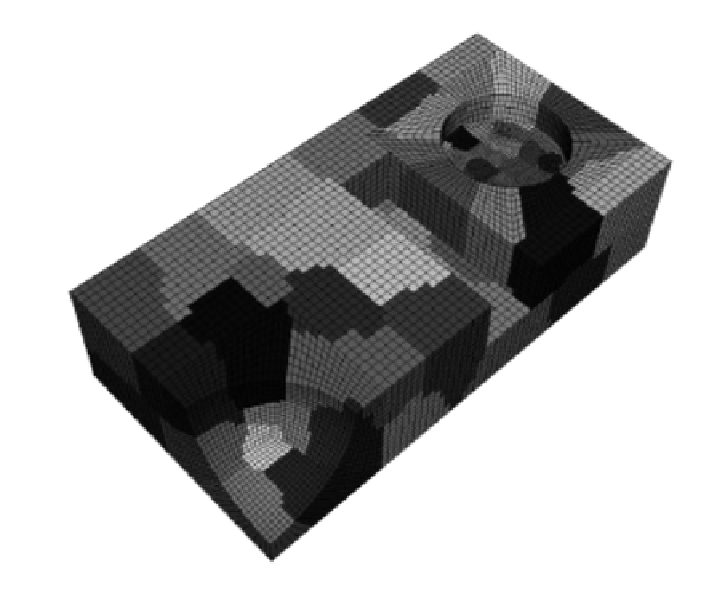Hardware Reference
In-Depth Information
FIGURE 21.1 (See color insert): Example of an ALE3D mesh decomposed
into domains. [Image courtesy of Bert Still (LLNL).]
on 6 of 18 total tasks. This gives applications great flexibility in allocating
compute resources.
21.2 Software, Hardware, and Performance
In a typical HPC workflow, ALE3D will run for hours to days on tens of
thousands of MPI tasks, producing restart files about once per hour and plot
files perhaps several times per hour on the Lustre file system. Users will run
VisIt on approximately one-tenth the compute allocation used for ALE3D to
visualize and perform sanity checks as the simulation proceeds.
Silo is a serial I/O library. Therefore, when ALE3D writes a restart file,
it first determines the number of Silo files to be used to store all the domains
of the main mesh: call this number N. N is selected completely independently
of the number of MPI tasks and domains. A good choice for N is to match









